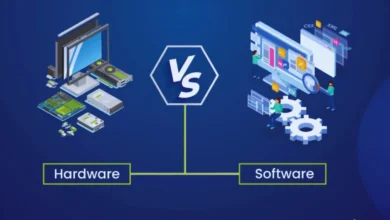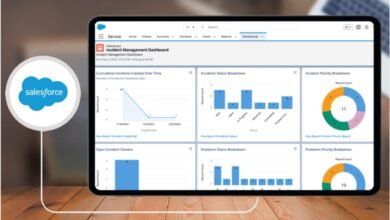Waterfall Model in Software Engineering Phases & Process

The Waterfall Model in software engineering is a highly structured and traditional methodology that follows a linear, step-by-step process throughout the software development lifecycle. It begins with the requirements-gathering phase, where the project’s goals, features, and specifications are defined and documented. Following this, the system design phase involves creating the architectural blueprint for the system. The implementation phase then brings the design to life through actual coding. Once the system is developed, the testing phase ensures that the software is free of defects and meets the original requirements. After testing, the deployment phase releases the software to users, and the maintenance phase follows, focusing on any post-launch updates, bug fixes, and improvements.
Each phase must be completed before moving on to the next, making the process highly organized and allowing for clear progress tracking. This structured approach is particularly beneficial for projects with well-defined, stable requirements and where detailed documentation is a priority. The Waterfall Model is ideal for large-scale projects that require methodical execution and where changes during the development cycle are minimal or unlikely.
What is the Waterfall Model in Software Engineering?
The Waterfall Model in software engineering is a linear sequential flow used for software development. Each phase has specific deliverables and milestones, ensuring smooth project execution. It is best suited for projects where requirements are clearly stated at the beginning and are unlikely to change.
| Aspect | Description |
| Structure | Follows a linear sequence |
| Suitability | Ideal for well-defined projects |
| Flexibility | Limited scope for modifications |
| Documentation | Extensive documentation required |
| Risk Management | Risks are identified in early stages |
| Testing | Conducted only after development |
| Project Size | Suitable for large projects |
Phases of the Waterfall Model

The Waterfall Model is a structured software development methodology that follows a linear and sequential approach, where each phase has a distinct function and must be completed before moving to the next. This method ensures that no steps are skipped or overlapped, providing clarity and organization throughout the development process. The phases are designed to work in a step-by-step manner, ensuring that each phase is thoroughly completed before moving forward.
Requirement Analysis
The first phase of the Waterfall Model is requirement analysis, where all the requirements of the project are collected and documented. During this phase, business analysts and stakeholders collaborate closely to define the project scope, functional requirements, and any constraints. The goal is to clearly understand and document what the software needs to accomplish. This documentation acts as a blueprint that guides the entire development process, ensuring that all future steps align with the initial goals of the project.
System Design
Once the requirements are defined, the next phase is system design. This phase focuses on creating the architecture of the software and defining data flow, system components, and their interactions. The design phase ensures that both functional and non-functional requirements are properly addressed within the system structure. It provides a detailed plan that developers will follow to build the system, ensuring that all aspects of the project, including scalability, performance, and security, are considered in the design.
Implementation
Developers take the system design and begin writing the application code, following the architectural plan established in the previous phase. In this phase, software modules are developed and individually tested. Once all modules are completed and validated, they are integrated into the full system, which is then ready for the next phase of testing.
Testing
Once the system is implemented, the testing phase begins. This phase is dedicated to identifying and fixing any errors or issues in the software. A variety of testing methods are used to ensure that the software meets the original requirements and functions as expected.
| Testing Approach | Purpose |
| Unit Testing | Tests individual components |
| Integration Testing | Ensures module connectivity |
| System Testing | Evaluates overall system behavior |
| Acceptance Testing | Validates that requirements are met |
| Regression Testing | Checks for unintentional changes |
Deployment
Once testing is complete and the software is free of defects, the deployment phase takes place. The software is moved to the production environment and released to users. In some cases, a beta version may be rolled out to a select group of users for feedback before the final release. Deployment also includes configuring the software for the user’s environment and ensuring it is fully operational.
Maintenance
After the software is deployed, the maintenance phase ensures that the system remains functional and up-to-date over time. This phase involves fixing bugs, improving performance, and making necessary updates or upgrades to the system. The maintenance phase is ongoing throughout the software’s lifecycle, ensuring that the software remains effective and continues to meet the evolving needs of users and the business.
Advantages of the Waterfall Model
The Waterfall Model offers several advantages that make it a popular choice for structured, large-scale software development projects. Its clear, sequential structure ensures that each phase of the development process is well-defined and completed before moving on to the next, providing a straightforward workflow. This organization helps teams focus on one task at a time, ensuring a methodical approach to development.
Clear Structure
The Waterfall Model’s step-by-step approach provides a clear and organized framework for development. Each phase is distinct and needs to be completed before proceeding to the next, creating a well-defined path from start to finish. This structure ensures that there is minimal ambiguity during the development process, making it easier for developers and project managers to track progress and maintain control.
Well-Documented
One of the key benefits of the Waterfall Model is its emphasis on thorough documentation at each phase. Every step, from requirements gathering to system design and testing, is documented, making it easier to track progress and identify areas that may need attention. This documentation also serves as a reference for future maintenance or upgrades, ensuring that the system’s development history is clear and accessible.
Easier Project Management
The Waterfall Model provides project managers with a clear roadmap that outlines specific deliverables and deadlines for each phase. This makes it easier to allocate resources, monitor progress, and ensure that the project stays on schedule. The defined phases also help with managing team members’ responsibilities, as each phase has designated tasks and outcomes, leading to more efficient project management.
Early Identification of Risks
The model’s structured approach allows for risks and challenges to be identified early in the development cycle. Since the requirements are gathered and defined upfront, potential issues can be addressed in the early phases before they become more significant problems. This proactive approach helps minimize the impact of unexpected issues, making it easier to mitigate risks throughout the project.
Cost-Effective for Fixed Projects
The Waterfall Model is particularly cost-effective for projects with well-defined requirements and fixed budgets. Since the project’s scope and deliverables are clearly defined from the start, it is easier to estimate costs and allocate resources accordingly. The model’s predictable structure makes it well-suited for projects with stable requirements, allowing businesses to complete projects within budget and avoid costly revisions.
Disadvantages of the Waterfall Model
While the Waterfall Model offers several advantages, it also has notable drawbacks that may limit its effectiveness in certain types of projects. Its rigid structure and sequential process can pose challenges, especially for projects with evolving requirements or those needing flexibility during the development cycle.
Limited Flexibility
One of the main drawbacks of the Waterfall Model is its limited flexibility. Once a phase is completed, making changes or revisiting previous phases is difficult and costly. This lack of adaptability means that if new requirements or changes emerge during later stages, they cannot be easily incorporated without disrupting the overall process. This inflexibility can be problematic for projects where requirements evolve.
Late Testing Stage
In the Waterfall Model, testing occurs only after the implementation phase is complete, which can delay the identification of errors or issues. This late testing approach means that problems with the system may not be discovered until later in the development cycle, increasing the cost and time required to fix them. By waiting until after implementation, the model misses opportunities to detect issues that could have been addressed during earlier stages.
Time-Consuming
The Waterfall Model requires that each phase be completed before moving on to the next, which can lead to longer development cycles. This sequential approach can be time-consuming, especially if there are delays or obstacles in any of the earlier phases. Since there is no overlap between phases, teams must wait until each step is fully completed before moving forward, resulting in potentially extended project timelines.
Not Ideal for Dynamic Projects
The Waterfall Model is not well-suited for projects with evolving or unclear requirements. Since it relies on a detailed upfront definition of all requirements, it can struggle to accommodate changes or adjustments as the project progresses. For dynamic projects where business needs or technical requirements change frequently, the rigid structure of the Waterfall Model can be a significant limitation, making it less suitable for these types of projects.
Real-World Applications of the Waterfall Model
The Waterfall Model is used across various industries where a structured and predictable approach to software development is essential. Its systematic, step-by-step process makes it suitable for projects that require a high level of documentation, compliance, and strict timelines.
Banking Systems
The Waterfall Model is frequently used in the banking industry to develop secure and structured financial applications. Given the critical nature of these systems, which require extensive validation and testing, the model’s emphasis on thorough documentation and testing at each stage ensures that financial applications are secure, reliable, and meet regulatory requirements. The clear, defined phases of the Waterfall Model align well with the regulatory standards often required in the banking sector.
Defense and Aerospace
The defense and aerospace industries often rely on the Waterfall Model for projects that have strict compliance and regulatory requirements. These industries require systems that adhere to precise standards and undergo extensive testing to ensure safety, reliability, and performance. The Waterfall Model’s detailed documentation and its clear, sequential approach ensure that all requirements are met and that the project progresses without skipping necessary steps, making it ideal for such highly regulated environments.
Healthcare Software
In healthcare, where precision and compliance with regulations are crucial, the Waterfall Model is often employed to develop healthcare software. This model ensures that thorough documentation is created from the outset, making it easier to meet compliance standards and audit requirements. The sequential process allows for rigorous testing before deployment, ensuring that the software is reliable and can securely handle sensitive health data.
Enterprise Software Development
For large-scale enterprise applications with fixed, well-defined requirements, the Waterfall Model is a preferred methodology. These applications often involve complex processes, integrations, and substantial resources, requiring a clear and structured development approach. The Waterfall Model’s sequential phases, detailed planning, and emphasis on documentation provide a systematic way to manage the development of enterprise software, ensuring that the project stays on track and meets the business needs without deviation.
Wrapping Up
The Waterfall Model, while a foundational methodology in software engineering, presents challenges when dealing with projects that involve evolving or unclear requirements. Its rigid, sequential structure makes it difficult to incorporate changes once development has begun, limiting its flexibility. However, despite these constraints, it remains an effective choice for large-scale, long-term projects where requirements are well-understood and unlikely to change. Its systematic approach ensures that every phase is thoroughly completed before moving to the next, which helps maintain focus and organization throughout the process.
The model’s emphasis on detailed documentation, comprehensive planning, and precise execution ensures that large projects can be tracked effectively and executed according to a clear timeline. In industries where stability, predictability, and a high level of documentation are essential, the Waterfall Model continues to offer a valuable framework. Ultimately, its use remains appropriate in specific scenarios that prioritize control and clarity throughout the software development lifecycle.
FAQs
What types of projects benefit most from the Waterfall Model?
Projects with stable and well-defined requirements benefit the most. Industries like healthcare, banking, and defense use this model because it ensures proper documentation and compliance with regulations. Since every phase follows a structured approach, it reduces the risk of unexpected changes in later stages.
What is the Waterfall Model’s approach to requirements changes?
The Waterfall Model is not designed to accommodate frequent changes. If modifications are needed after a phase is completed, the process becomes costly and time-consuming. For projects requiring flexibility, Agile or iterative models may be more suitable.
Why is documentation important in the Waterfall Model?
Documentation plays a crucial role as each phase has clearly defined deliverables. It helps teams track progress, ensures transparency, and makes it easier to onboard new team members. Detailed documentation also aids in maintenance and future upgrades.
What are the Waterfall Model’s primary drawbacks?
Some of the main challenges include the inability to incorporate changes easily, delayed testing, and the risk of identifying issues late in the development process. It also requires extensive documentation and can lead to extended timelines for project completion.
How does testing differ in the Waterfall Model compared to Agile?
In the Waterfall Model, testing occurs after development is completed, meaning issues are identified late. In Agile, testing is conducted throughout the development cycle, allowing teams to address issues early. Agile ensures continuous feedback, whereas Waterfall relies on a final testing phase before deployment.
What industries prefer the Waterfall Model?
Industries like aerospace, banking, healthcare, and government projects prefer this model. These industries require strict compliance, detailed documentation, and a well-structured development approach. The Waterfall Model ensures a systematic process from requirement analysis to maintenance.
Is it possible to combine the Waterfall Model with other approaches?
Yes, hybrid approaches can be used where the Waterfall Model is combined with Agile or iterative methodologies. This allows teams to follow a structured approach while also incorporating some flexibility where needed, making it a balanced solution for complex projects.




